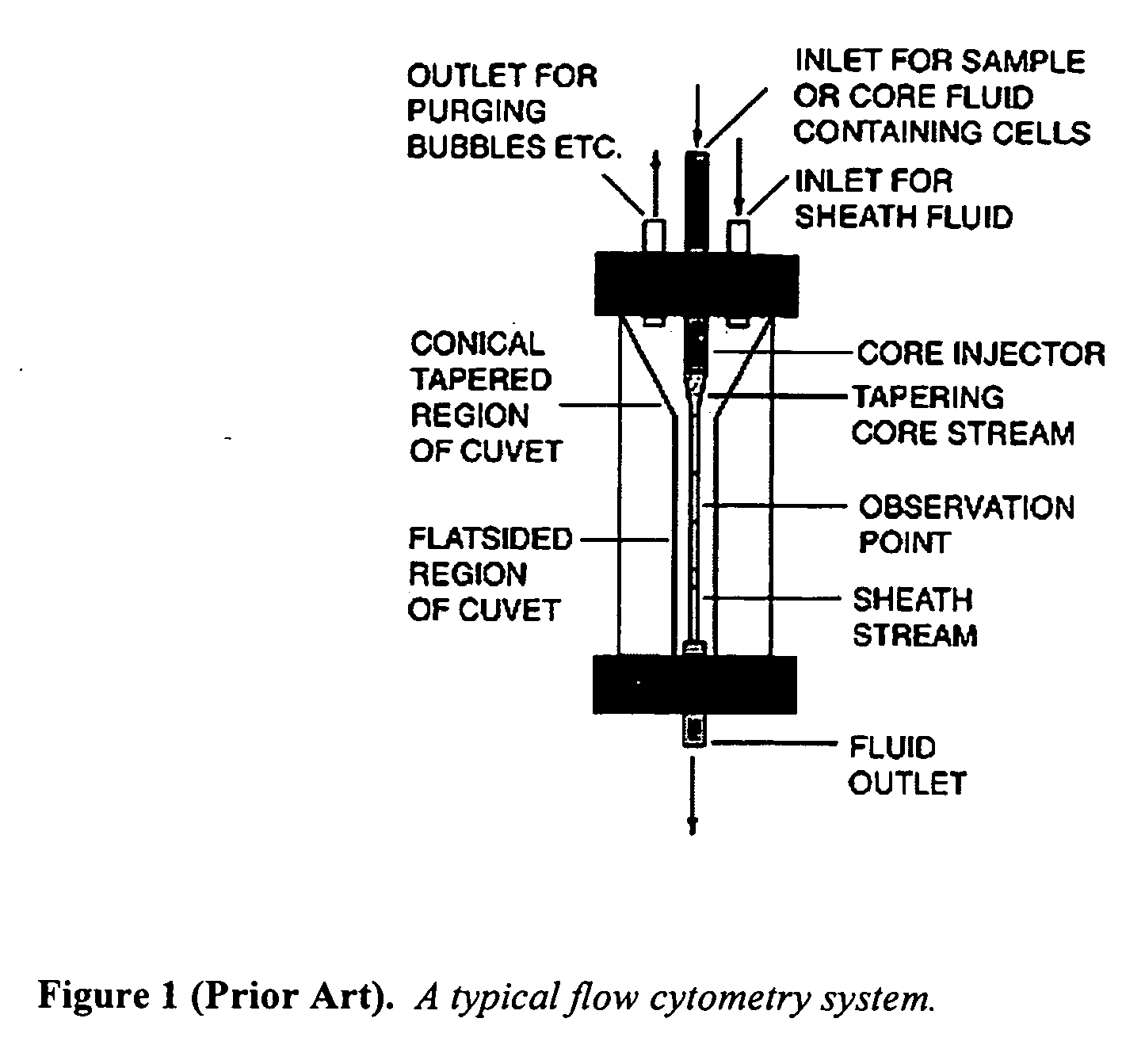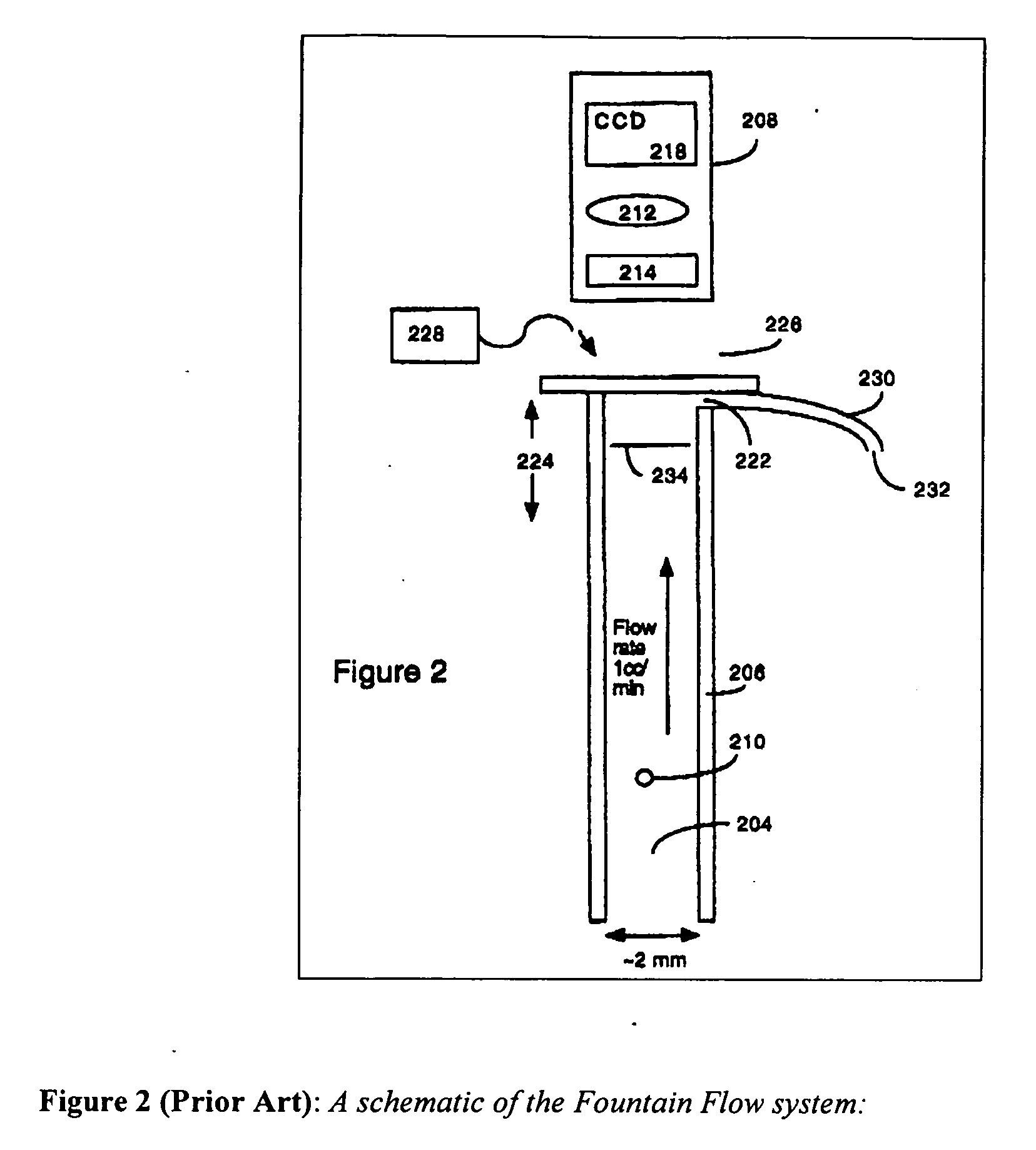Method and system for counting particles in a laminar flow with an imaging device
a technology of imaging device and laminar flow, applied in the field of counting of imaged particles, to achieve the effect of optimizing accurate measurements, accurately determining particle densities, and reducing background nois
- Summary
- Abstract
- Description
- Claims
- Application Information
AI Technical Summary
Benefits of technology
Problems solved by technology
Method used
Image
Examples
Embodiment Construction
[0108] The present invention comprises apparatus and methods for counting particles in a flowing liquid. Both apparatus parameters and signal processing parameters are adjusted according to the concentration of particles in the flowing liquid.
[0109]FIGS. 3A and 3B are successive images from a Fountain Flow Cytometer according to the present invention. FIG. 3C shows the difference between the two images. FIG. 3C illustrates the kind of figure that might result from algorithm 808A (for low particle density) or 808B (for intermediate particle density), since sequential image differencing is used, as described below in conjunction with FIGS. 9 and 10.
[0110]FIGS. 4, 5, and 6 illustrate how particle detection varies according to the particle concentration in the flow. At lower concentrations, each particle may be counted, whereas at higher concentrations, the number of actual particles must be estimated from the lower number of detected particles.
[0111]FIG. 4 is a plot illustrating act...
PUM
| Property | Measurement | Unit |
|---|---|---|
| diameter | aaaaa | aaaaa |
| power | aaaaa | aaaaa |
| imaging | aaaaa | aaaaa |
Abstract
Description
Claims
Application Information
 Login to View More
Login to View More - R&D
- Intellectual Property
- Life Sciences
- Materials
- Tech Scout
- Unparalleled Data Quality
- Higher Quality Content
- 60% Fewer Hallucinations
Browse by: Latest US Patents, China's latest patents, Technical Efficacy Thesaurus, Application Domain, Technology Topic, Popular Technical Reports.
© 2025 PatSnap. All rights reserved.Legal|Privacy policy|Modern Slavery Act Transparency Statement|Sitemap|About US| Contact US: help@patsnap.com



